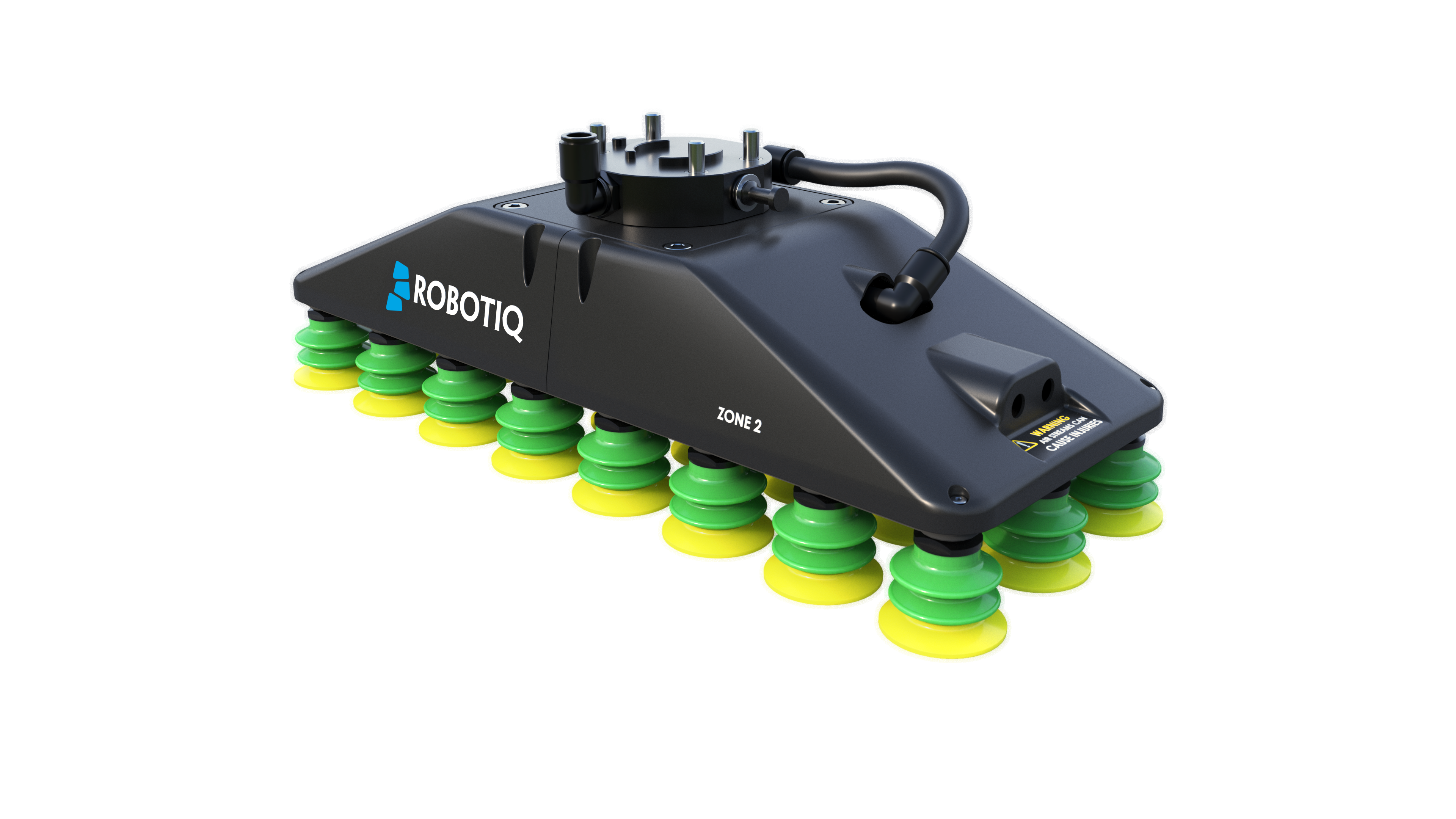Grippers for Collaborative Robots

Posted on Mar 09, 2015 in Robot Grippers
7 min read time
When putting a collaborative robot cell together, many design decisions have to be made. First of all, the robot itself, its different functionalities and specifications. Then the controller, the programming methods, the emplacement on the work floor have to be considered. Finally, you must make a choice of robot grippers to be used. Most robotic cell design underestimates the importance of the gripper choice for collaborative applications. I would compare the right gripper to the right tires on a race car. This may be underestimated too, since the tires are the only contact the race car has with the ground, where it gets all its traction. A race car with bad tires, results in a bad race. Same thing for a gripper, it is the only peripheral of the robotic cell that will touch the part you are manufacturing. A cell with a bad gripper will probably result in bad cell performance.
Let's start with a baseline. The goal of a robotic cell is to increase productivity, quality and consistency. Either you decide to choose a collaborative robot or an industrial robot, both solutions have the same goal. However, they won't necessarily use the same type of gripper. Well they actually can use the same kind of robot gripper, but some are better than others when it's time to do collaborative applications. Here is a list of things that should be considered in the choice of a gripper for collaborative robots.
Use Alongside People
In fact, since collaborative robots are used alongside humans it is important to consider the safety requirement of the gripper in the design of the cell. There are a couple of ISO standards that need to be followed when it's time to design a cell. Concerning collaborative robots, the most significant are ISO 10218 (Robot and robotic devices - Safety requirements for industrial robots) and TS 15066 (Safety of collaborative robots). These rules and regulations guide the use of robot and robot grippers and the required risk assessment that must be done in most cases. Here are 3 aspects that should be considered when looking for a gripper.


1. Gripper Actuation and Safety Functions
The gripper taken alone, has to answer to different safety requirements. Speed, maximum force and pressure limitations are among the requirements that must be analyzed in the design of the cell.
2. Static Gripper Attached to Moving Robot (Impact)
This part of the analysis considers the gripper as a static object once it is attached to the robot. As you can figure out, it analyzes the potential impact that the gripper can cause on a human worker, most specifically the pressure from an impact. Grippers for collaborative uses are often designed to have soft edges, round shapes and soft materials. This way, the force are spread over a wider surface and the pressure due to impact is lower. Gripper manufacturers are trying to reduce the risk in their design to ensure a reduced risk to the customer of harming a worker and to reduce the complexity of the risk assessment.
3. Gripper on Robot Handling Parts

Finally, it's also important to consider the gripper once it takes hold of a part. In fact, if the gripper for some reason fails during a motion and the object slips and is thrown through the air, since there are no fences, this can be a very dangerous situation. So this is why you are looking for a gripper that cannot drop an object in case of a punctured hose or during an e-stop. A gripper with a self-locking system should be used in these cases. This reduces or eliminates the potential of flying objects. Robot manufacturers should try to introduce these parameters to their grippers to ensure the customer, once again, has a safe gripper with reduce risk assessment complexity.
Easy to Install
Of course you are looking for a gripper that is easy to install with your robot. One of the big advantages of using a collaborative robot is its ease of use and installation, so it would be ridiculous to spend extra time designing a custom fitting to adapt a gripper to your robot. This is why we offer an all inclusive installation kit for robot like Universal Robots. This bundle has everything you need: the mechanical coupling, fixtures, required wiring and software to integrate the Gripper ASAP on your co-bot.

Easy to Program
As I said, one goal of using collaborative robots is the ease of use. Most co-bots allow hand-guiding programming methods. Since this concept chops time in the programming process, you may want to do the same thing with your gripper programming. Look for a gripper that has a simple programming interface or even a built-in programming interface with your teach pendant.
Flexible Tasking
Finally, if you are not 100% sure that the robot will be doing the exact same job during its whole lifetime, some new parts or processes can be incorporated into the robot task. This is why you should use a gripper that can grasp a wide range of shapes and parts. This gives you a bigger leverage when it's time to change the purpose of the robot. Flexibility should always be a requirement in the choice of a gripper.
Then... does your application fit the gripper. That is probably the best question to ask yourself. In any situation if a gripper is flexible, cost effective, easy to install, but it is not fitting your application, it is not pertinent to use it. Make sure to target your needs before going forward with a complete robotic cell analysis. You can sometimes get lost when starting a process without establishing your needs first.
Hopefully, this will guide your choice of gripper for a collaborative use. Click on the button below to have further information on how to analyze the different requirements necessary to establish a robotic cell for a machine tending application. You can also subscribe to our blog to get weekly posts on robotic industry news and technologies.


.jpg)





Leave a comment